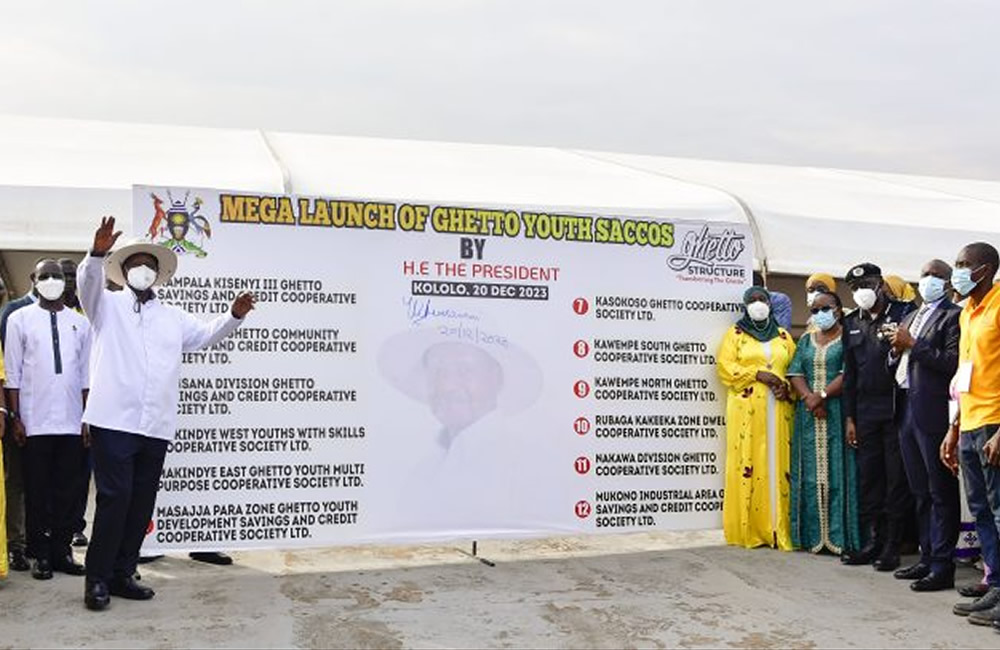President Yoweri Museveni has pledged a significant investment of Shs1.2 billion in 12 ghetto Savings and Credit Cooperative Organizations (SACCOs) located in the Kampala Metropolitan Area. The announcement came during the launch of these SACCOs at Kololo Independence Grounds on December 20.
During the event, President Museveni emphasized the importance of collaboration and transparency among the SACCOs to maximize the benefits of the financial injection. He committed to injecting Shs100 million into each SACCO, marking the beginning of a sustained effort to uplift the lives of the ghetto youth.
President Museveni commended the leaders in Kampala, including Brig. Ddamulira and Maj. Emma Kutesa, for their hard work in bringing positive change to the lives of the ghetto youth in Kampala, as well as the neighboring districts of Wakiso and Mukono. He acknowledged the vital role that the people in the ghetto play in the socio-economic transformation of the country.
Reflecting on his own experiences, President Museveni shared his involvement in transforming the Katwe ghetto in 1968, emphasizing that the NRM should find it easy to address the challenges faced by the ghetto youth. He urged the youth to engage in the four sectors of the economy—commercial agriculture, industry, services, and information and communication technology (ICT)—to create wealth.
The Minister of Kampala Capital City and Metropolitan Affairs, Hajjat Minsa Kabanda, highlighted her commitment to transforming Kampala from the grassroots by involving the ghetto population. She requested educational opportunities for some ghetto youth, suggesting that reformed individuals could contribute positively by addressing issues such as crime.
Hajjat Minsa Kabanda, along with the Executive Director of Kampala Capital City Authority (KCCA), Dorothy Kisaka, expressed their plans to secure land for the ghetto youth to establish greenhouses. This initiative aims to empower them to cultivate agricultural products and subsequently find markets for their produce.
AIGP Brig. Christopher Ddamulira, the Director of Crime Intelligence, informed President Museveni that the beneficiaries of this initiative are approximately 120,000 ghetto youth residing and working in 216 ghetto zones. The Ghetto Structure, created in March the previous year, serves as a mechanism to mobilize these youth for peace and development.
Shafiq Kalyango, the Chairman of Ghetto Structures, expressed gratitude to President Museveni for his support in transforming them into responsible citizens. The collaboration between State House, the Directorate of Crime Intelligence, and other security agencies is expected to provide a clear mechanism for mobilizing the ghetto youth towards peace and development.

















